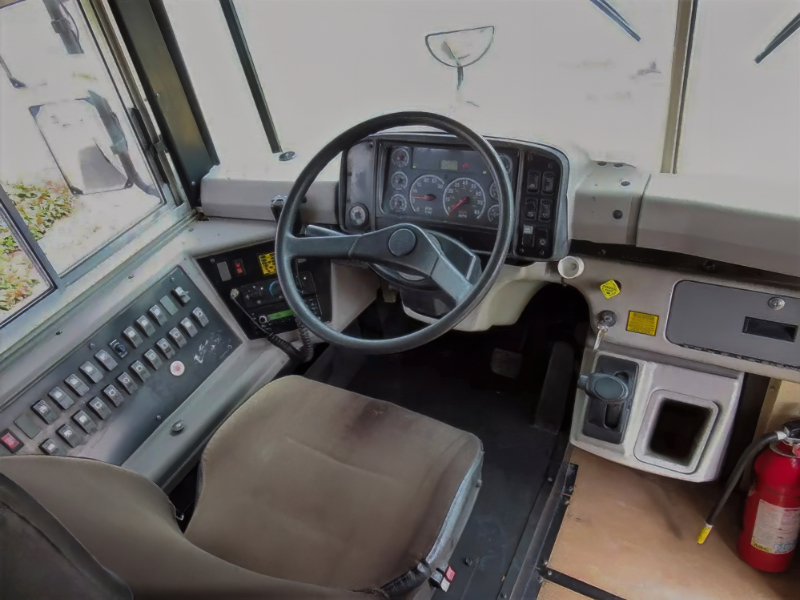
Not if your drivers like sunsets…
In the discussions about getting to healthier school start times (SSTs), the driver shortage frequently comes up as the final excuse as to why we just can’t get there. The offered logic is that healthier SSTs will somehow further exacerbate the driver shortage. I’m not sure how they get from A to B on this, but let’s explore what healthier SST might mean for your workforce.
But 1st, let’s review: What are healthier SSTs? The American Academy of Pediatrics (AAP) and a whole host of other science-centered associations agree that middle and high schools should start at 8:30a or later. Elementary students are not negatively impacted by starting school as early as 7:45a. Moreover, this is starting to be old science – the AAP has been promoting 08:30a+ since 2014.
Now, back to school bus drivers. In many school districts, the pandemic exacerbated the burgeoning driver shortage. Nationally, we had 13% fewer drivers in 2021 than we did in 2019.[1] The common conclusion is that older drivers chose to retire during COVID, but there is something more to it. The demographic profile of drivers also changed.
Research indicates that the driver pool skewed even older after COVID. We lost a smaller percentage of our drivers 55+ then we did drivers in the 25-34 age bracket. Where did the younger drivers go? It’s likely that many snapped up CDL jobs delivering toilet paper (and everything else) to our homes. By 2021, 73% of all school bus drivers were 50+ years old.[2] As I somehow continue to age (despite all my efforts to the contrary), I’ll be the 1st person to say that “age is just a number.” Nevertheless, employing an older workforce inevitably means that you will have each employee for fewer years than you would if the average age was 25, even if they are all happily engaged in their work. So, we came out of COVID short and we are now primarily working with a group of drivers who will be employed for fewer years.

Add into the problem that the short-term prospect for gaining school bus drivers is not great. As of May 2023, the Bureau of Labor Statistics (BLS) counted 372k school bus drivers in the U.S and another 187 non-school bus drivers. There are 1.6M delivery truck drivers and 2.2M heavy/tractor-trailer truck drivers. Between 2023 and 2033, the BLS projects varying rates of growth for these groups:
- School bus driver positions will grow by 2%.
- Delivery truck driver positions will grow by 9%.
- Heavy truck driver positions will grow by 5%.
If you do the math, the growth of the delivery industry means they need an additional 144k drivers per year, or slightly more than 1/3 of all the school bus drivers we have. On top of that, the American Trucking Association predicts an overall shortage of drivers. So, school districts will need more bus drivers, but they are facing increasing competition from other market sectors that require a CDL and there is a national shortfall of people with a CDL. Moreover, delivery and heavy truck driving positions frequently offer higher pay (and cargo doesn’t typically give you lip or throw things out of windows).
So, we have stiff industry competition for drivers. We also have a problem of our own making – split shifts. For many school bus drivers, the job is 3 hours of work in the early morning, 3 hours of nothing in the middle, then 3 hours of work. Most districts don’t pay drivers for those 3 hours of nothing in the middle. Some offer a full day’s pay (a paycheck that shows pay for 7.5 or 8.0 hours of daily work), but that doesn’t get around the fact that a split shift means an overall longer time period in which work happens. Split shifts simply don’t work for a lot of people’s family situations.
Split shifts are not popular with our current drivers; they are merely tolerated. With a recent large district urban client, we asked drivers about their jobs. A full 70% said they would prefer a straight 8-hour shift to their current split shift. But despite not having that, 88% said they enjoyed their work on most days. Imagine how much we might close the driver shortage gap if that district offered a straight 8-hour day to as many drivers as it could.
School districts tend to put their heads in the sand about industry competition and the ugly reality of split shifts. They aren’t organizationally equipped to pay bus drivers competitively or to rethink how to make the job attractive to a wider pool. So, when healthier SSTs are brought up, they raise the driver shortage as cover for institutional inertia.
One detractor within a client’s staff even once stated that moving to healthier SSTs would make it harder to recruit and retain bus drivers. Is that likely to be true? Probably not, because many of our current early SSTs mean ridiculously early driver work schedules.
If your 1st tier school starts at starts at 7:30a, what time does the bus driver have to get up to drive to the bus lot to be at the 1st bus stop by 6:10a? I recently met with bus drivers where middle and high schools start at the insane time of 7:10a (elementary schools start at 8:25a). One of the drivers mentioned they go to bed each “night” at 6:00p in order to be on the road in time for her 1st pickup. A lifestyle where you are going to bed before sunset and starting work hours before sunrise is not one many people want. As people age, they tend to go to sleep a bit earlier and wake up a bit earlier, but even the early bird specials at Denny’s don’t start until 6:00a. Having a later 1st tier in your SSTs might actually be attractive to those potential drivers who want to watch the sunset before they go to bed at night.
So when your school district plays the “bus driver shortage” card against healthier SSTs, understand that the shortage will not be made worse by moving to SSTs that are better for kids. Just the opposite, it could help reduce the shortage. And to the more general question or whether later SSTs inherently require more bus drivers, the answer is emphatically “no.” That would only be true if your routing team completely failed you.
[1] NEA Today, December 14, 2023.
[2] ADP Research Institute, The Missing School Bus Drivers, 2021.


